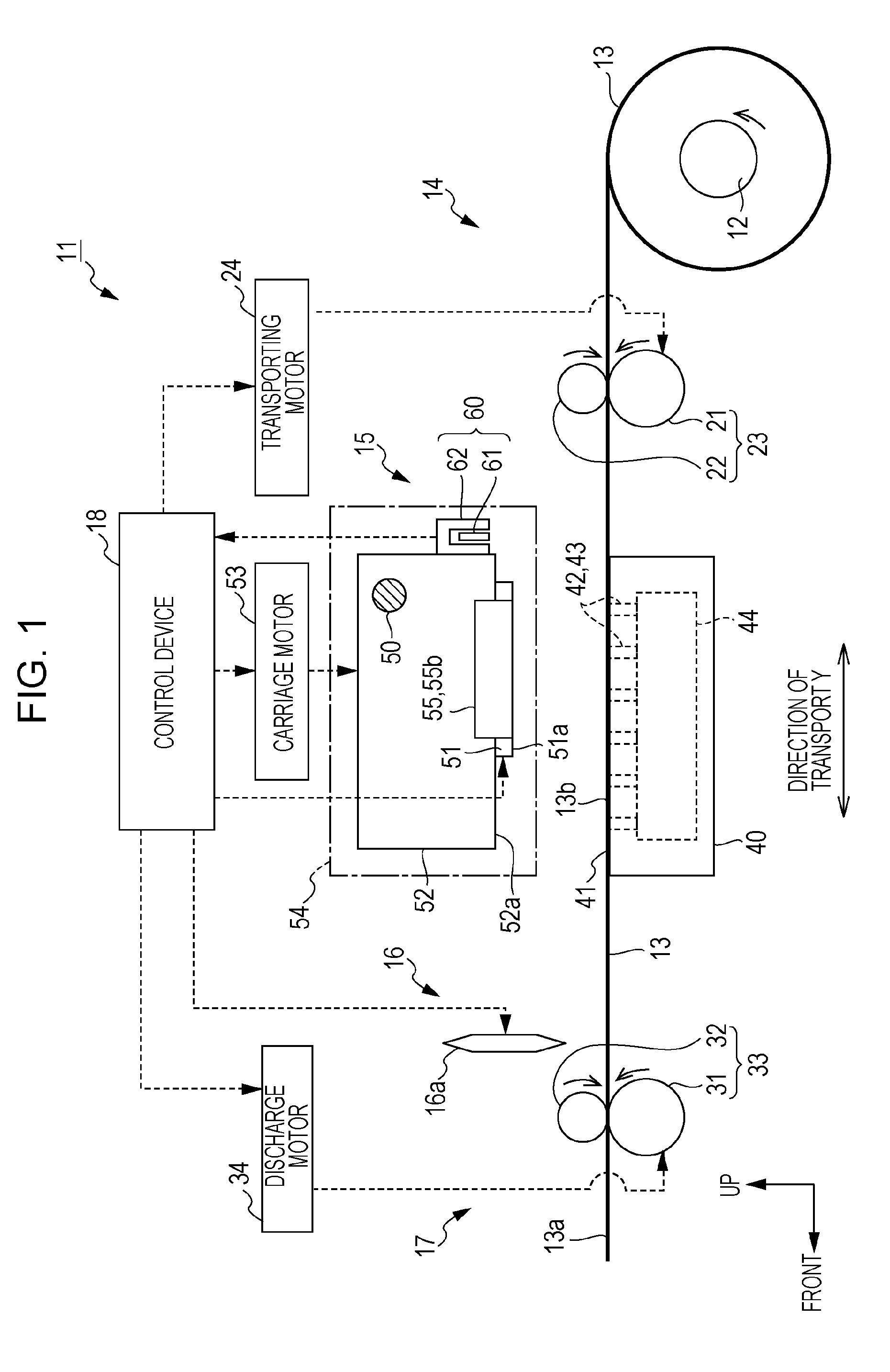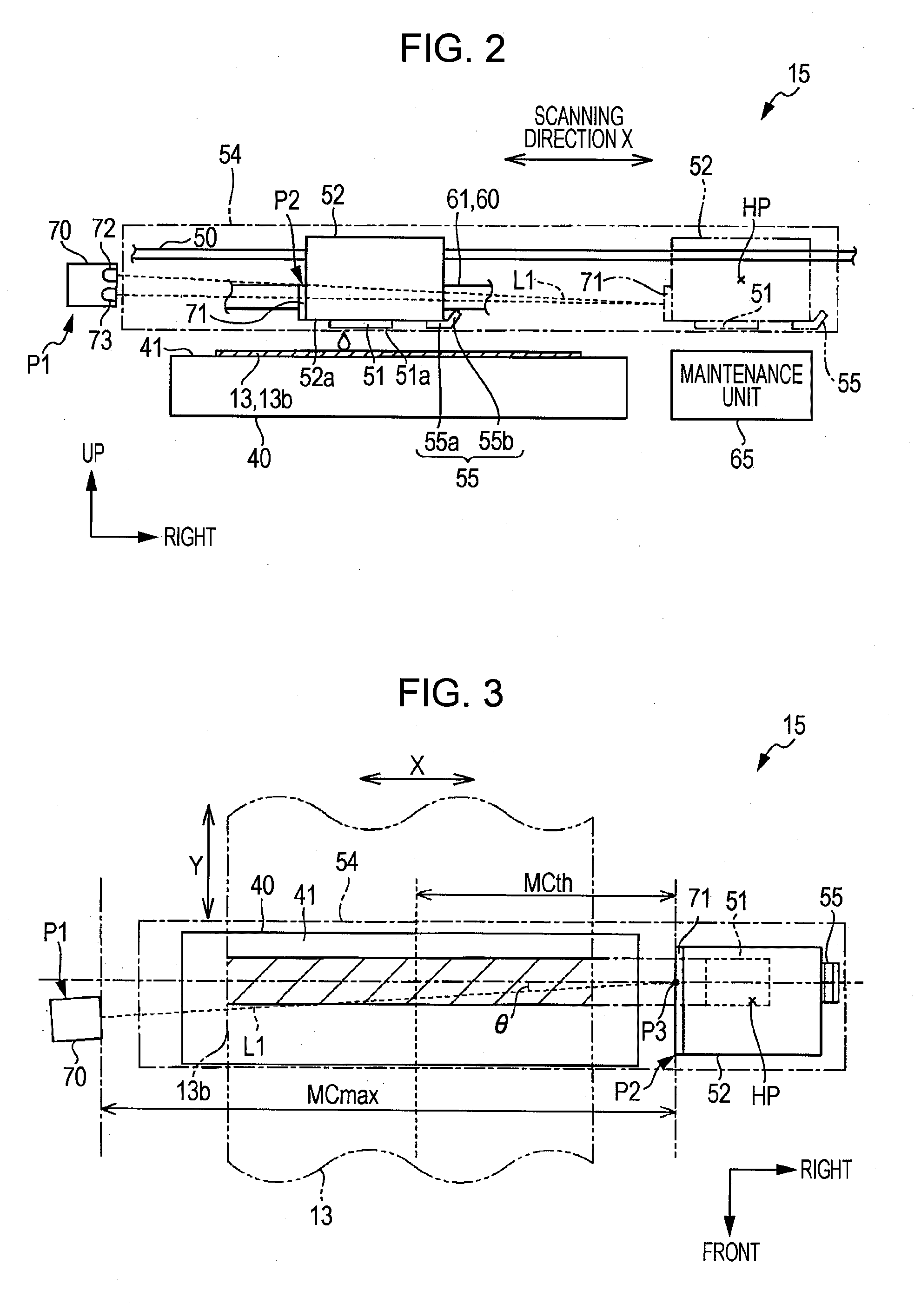Liquid ejecting apparatus
a technology of liquid ejecting apparatus and ejector, which is applied in the direction of printing, other printing apparatus, etc., can solve the problems of inability to accurately transport the target along the direction of transport, damage to the target, and inability to detect the failure of the transport of the target, so as to improve the determination accuracy
- Summary
- Abstract
- Description
- Claims
- Application Information
AI Technical Summary
Benefits of technology
Problems solved by technology
Method used
Image
Examples
Embodiment Construction
[0037]Referring now to FIG. 1 to FIG. 6, an embodiment in which the invention is embodied will be described. In the following description of this specification, “front and back directions”, “up and down directions”, and “left and right directions” indicate “front and back directions”, “up and down directions”, and “left and right directions” indicated by arrows in FIG. 1, FIG. 2 and FIG. 3, respectively.
[0038]As shown in FIG. 1, an ink jet printer 11 as an example of a liquid ejecting apparatus is an apparatus configured to form an image on a roll paper 13 wound around a revolving shaft 12 extending in the lateral direction as a direction orthogonal to a paper plane into a roll form as an example of a target by adhering ink as an example of liquid on the roll paper 13. The ink jet printer 11 in this configuration includes a transporting portion 14 configured to transport the roll paper 13 fed by the rotation of the revolving shaft 12 around which the roll paper 13 is wound countercl...
PUM
 Login to View More
Login to View More Abstract
Description
Claims
Application Information
 Login to View More
Login to View More - R&D
- Intellectual Property
- Life Sciences
- Materials
- Tech Scout
- Unparalleled Data Quality
- Higher Quality Content
- 60% Fewer Hallucinations
Browse by: Latest US Patents, China's latest patents, Technical Efficacy Thesaurus, Application Domain, Technology Topic, Popular Technical Reports.
© 2025 PatSnap. All rights reserved.Legal|Privacy policy|Modern Slavery Act Transparency Statement|Sitemap|About US| Contact US: help@patsnap.com



